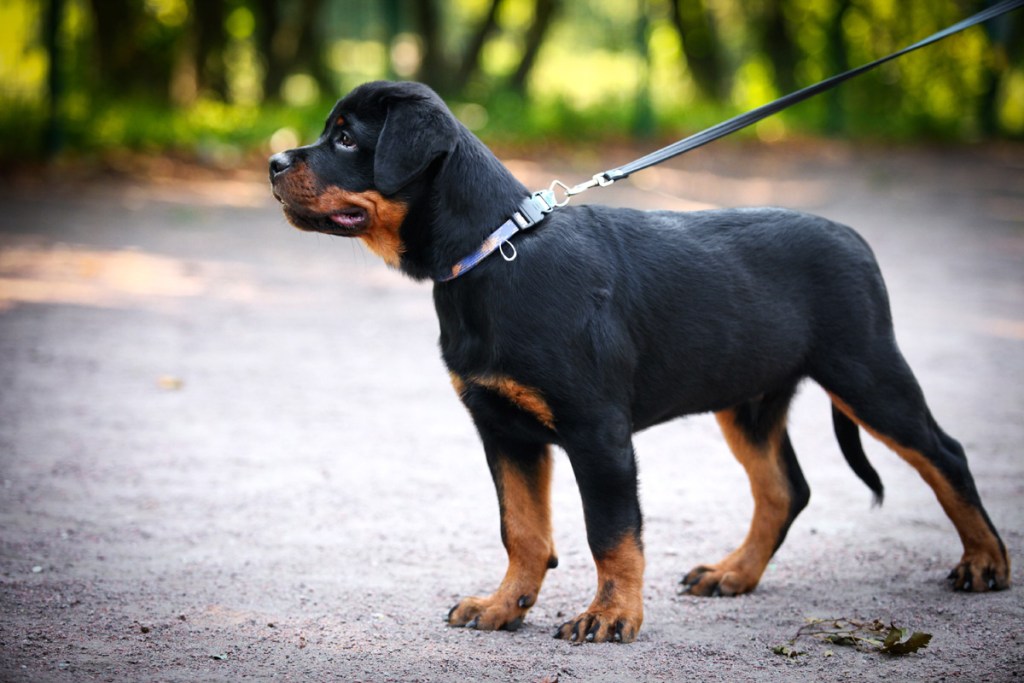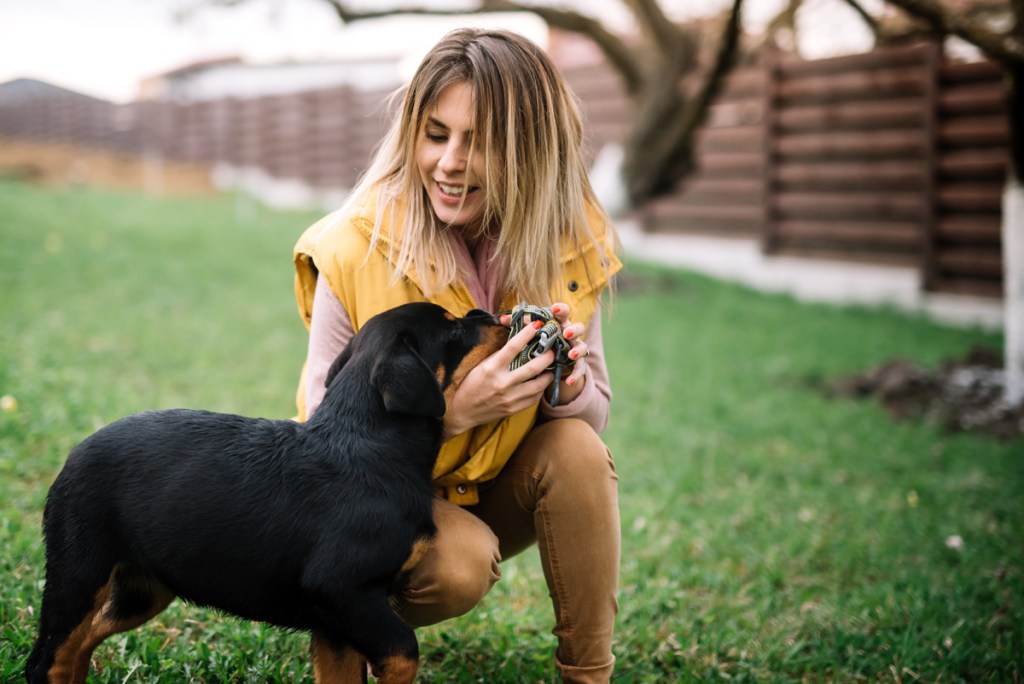Just like children, dogs need training and structure in their lives. This is especially true of large, powerful breeds like Rottweilers, fondly called Rotties. Leadership, puppy socialization, basic training classes, and living in an owner’s home are all key to raising a well-mannered Rottie, say experts at the American Kennel Club (AKC). By assuming the role of a calm, assertive leader in your Rottie’s life he will grow into a well-adjusted cuddle bug.
Are Rottweilers easy to train?
According to experts at the ARC, Rotties are an intelligent, highly trainable breed that love to learn new skills. In canine psychologist Stanley Coren’s book The Intelligence of Dogs, Rottweilers are listed among the top 10 smartest working dogs.

How to train a Rottweiler puppy
Training and socialization go hand-in-hand when raising a Rottie. Socialization begins with a reputable breeder who handles the puppies daily and introduces them to a variety of people. Interacting with littermates is an important part of early socialization. Puppies shouldn’t be taken from their litters before seven weeks of age says longtime Rottweiler breeder Teresa Bradley in an AKC article.
Follow these training tips when your puppy arrives:
- Enroll your newcomer in puppy socialization classes with a positive motivation trainer. According to the American Veterinary Society of Animal Behavior (AVSAB), dogs should be enrolled in puppy classes as early as 7 to 8 weeks of age. Your puppy should have a minimum of one set of vaccines and a first deworming at least seven days before the first class.
- At home, work on basic obedience commands such as “sit,” “down,” “stay,” “come,” “heel,” and “off.” Puppies have a short attention span, so keep the training sessions to about five minutes and repeat a few times a day.
- Establish house rules. If you don’t want your dog on the furniture, teach the “off” command and reward him for obeying. Avoid begging at the table by teaching a “go to your place” command and directing your puppy to his bed or crate. Provide a chew toy to keep him busy while the family eats.
Puppy socialization outside the classroom
The first three months of a puppy’s life is the period when sociability outweighs fear, so it’s the perfect time to introduce your dog to as many new people, places, and experiences as possible. Improperly socialized dogs may develop behavioral problems later in life, such as fear, avoidance, and/or aggression say AVSAB experts. It’s important not to push your puppy past his comfort zone when socializing. Be patient and don’t rush the process. Following are a few ways to socialize your puppy.
Invite friends to your home
Once your pup has settled into her new home, invite friends of different genders and ages to your home. Let your puppy go to the guests, and when she does, ask them to reward her with a treat. You can also practice this with people who ask to pet your puppy while out on a walk.
Visit public places
Choose pet-friendly places where your puppy will meet people but you won’t be likely to run into too many other dogs. For example, The Home Depot and Lowes or your local mall.
Take your pup along for the ride
Include your puppy on short trips to pick up the kids or when going to the drive-thru. This will get him used to traveling in the car and to the sights and sounds in the neighborhood.
How do you discipline a Rottweiler?
Rotties can have stubborn streaks and it’s important that discipline is fair and firm without being rough say ARC experts. According to the club, “Physical mastery is less important than sensitive and positive training methods, time, and patience.”
So if, for example, your Rottie is biting at pant legs — a herding instinct that comes naturally to this breed — redirect her to positive behavior such as playing with a tug toy. For puppies who display guarding behavior with toys, Bradley suggests practicing taking the toy away using a word such as “out” and then giving it back again. Consistent training early on typically results in problems being resolved by the time a Rottie reaches four months old says the breeder.

It’s true that raising a Rottweiler is a big responsibility and requires a large investment of time. But there’s no doubt that all of your hard work will pay off. A well-socialized and properly trained Rottie will grow into a confident dog who is a model citizen in public and a loving, affectionate family member at home.
Editors' Recommendations
- 5 surefire ways to keep your dog off your bed and get a good night’s sleep
- 7 dog training podcasts we’re obsessed with
- 4 effective ways to house-train your stubborn little Chihuahua
- Video: Dog befriends bike thief (or why golden retrievers shouldn’t be guard dogs)
- Video: Adorable dog thinks the TV wants to play fetch




